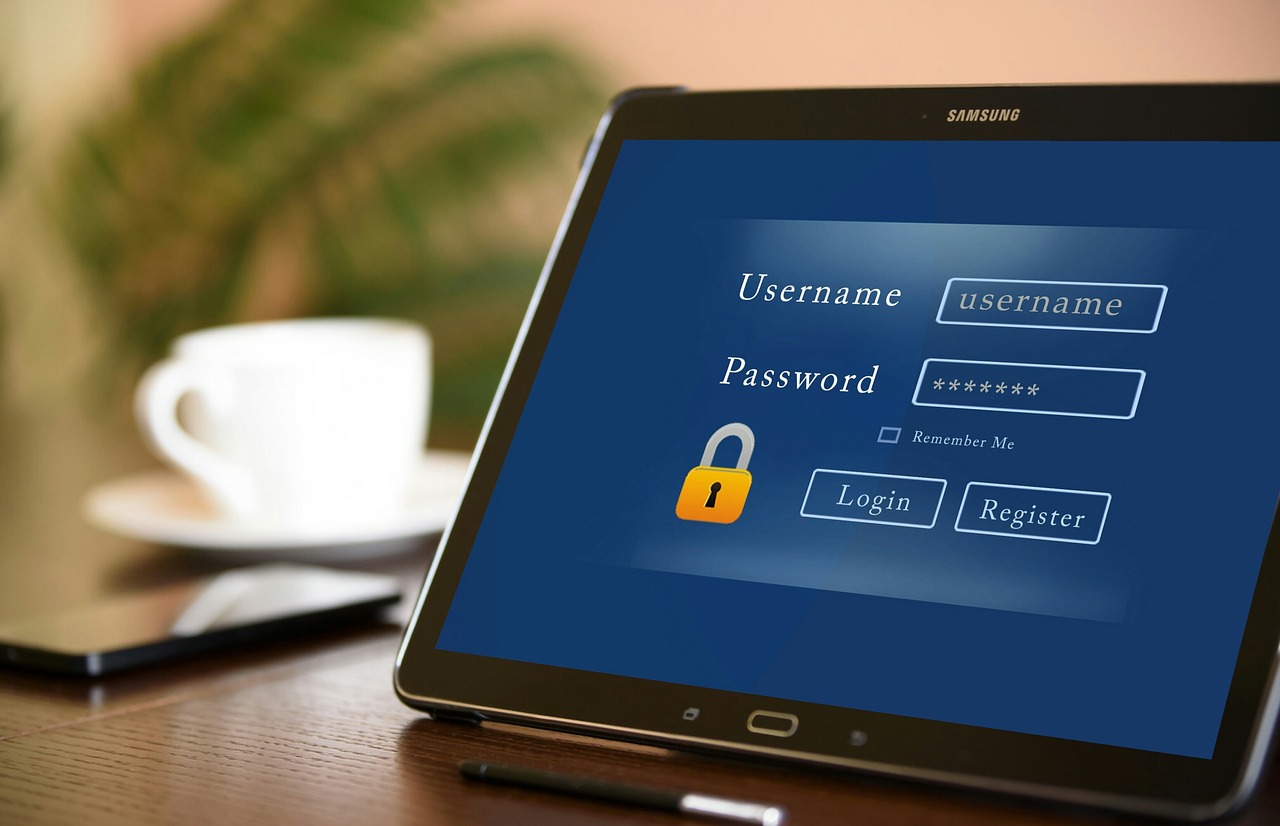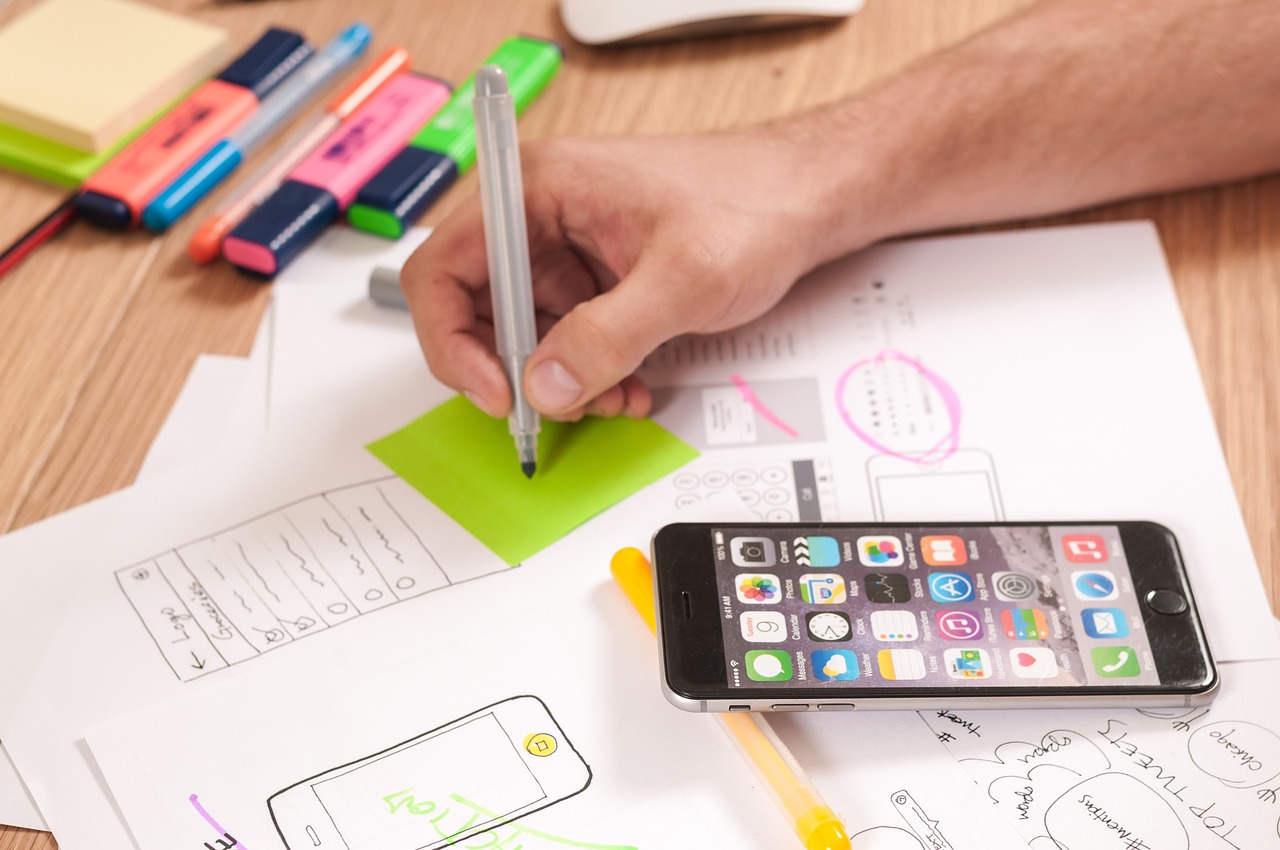The Importance of User Authentication in Wallet Security
User authentication is not just a buzzword in the tech world; it's a **critical component** of wallet security that can mean the difference between keeping your digital assets safe or losing them to cybercriminals. Imagine your wallet as a treasure chest filled with valuable coins. Without a **strong lock** and a trusted key, anyone could waltz in and take what’s yours. In today's digital age, where threats loom large, understanding the nuances of user authentication becomes paramount.
So, what exactly is user authentication? At its core, it's the process of verifying a user's identity before granting access to a digital wallet. Think of it as the bouncer at an exclusive club who checks IDs before letting people in. This process is essential because it ensures that only **authorized users** can access sensitive information and conduct transactions. With the rise of cryptocurrencies and digital assets, the stakes have never been higher. Protecting these assets from unauthorized access is crucial, and user authentication plays a significant role in this battle against cyber threats.
As we dive deeper into this topic, we'll explore various authentication methods, their effectiveness, and best practices to bolster wallet security. From the traditional password-based systems to cutting-edge biometric solutions, each method has its strengths and weaknesses. However, one thing is clear: **no single method is foolproof**. This is why a layered approach, combining multiple authentication methods, is often the best strategy. In the following sections, we will break down these methods and provide actionable insights to help you safeguard your digital wallet.
User authentication serves as the first line of defense against unauthorized access. It is essential to understand its significance, especially in a world where cyber threats are becoming increasingly sophisticated. The process typically involves two main components: something you know (like a password) and something you have (like a smartphone for 2FA). By requiring multiple forms of verification, you can significantly reduce the risk of unauthorized access.
In summary, user authentication is not merely a technical requirement; it's a vital practice that every wallet user should prioritize. The more robust your authentication methods, the safer your digital assets will be. As we move forward, let’s delve into the various types of authentication methods available and how they can be leveraged to enhance wallet security.
When it comes to securing your digital wallet, there are several authentication methods to consider. Each method comes with its own set of advantages and disadvantages, and understanding these can help you make informed decisions about your wallet security. Here’s a brief overview of some common authentication methods:
- Password-Based Authentication: This is the most common method, but it comes with its own risks if not managed properly.
- Biometric Authentication: Uses unique biological traits, such as fingerprints or facial recognition, to verify identity.
- Two-Factor Authentication (2FA): Adds an extra layer of security by requiring a second form of verification.
As we explore each of these methods in detail, you'll gain a comprehensive understanding of how to effectively secure your digital wallet against threats. Remember, in the realm of cybersecurity, knowledge is power, and the more you know about these methods, the better equipped you'll be to protect your assets.
Q: What is user authentication?
A: User authentication is the process of verifying a user's identity to ensure that only authorized individuals can access a digital wallet.
Q: Why is two-factor authentication important?
A: Two-factor authentication adds an extra layer of security, making it significantly harder for unauthorized users to gain access to your wallet.
Q: What are the best practices for creating strong passwords?
A: Best practices include using a mix of upper and lower case letters, numbers, and special characters, as well as changing passwords regularly.
Q: How can I manage my passwords securely?
A: Utilizing password management tools can help you securely store and manage your passwords, reducing the risk of forgetting them or using weak passwords.

Understanding User Authentication
User authentication is like the bouncer at a club, ensuring that only the right people get in. In the digital realm, this process is crucial for verifying a user's identity before granting access to sensitive information, such as digital wallets. With the rise of cyber threats and unauthorized access attempts, understanding user authentication has become more important than ever. It acts as the first line of defense, safeguarding your digital assets from prying eyes.
At its core, user authentication involves confirming that a user is who they claim to be. This verification can take many forms, and each method has its own strengths and weaknesses. For instance, a simple password might be easy to remember but can be easily compromised. On the other hand, biometric authentication, which uses unique biological traits like fingerprints or facial recognition, offers a higher level of security but may come with its own set of challenges.
Overall, the significance of user authentication cannot be overstated. It not only protects your digital wallet but also builds trust in the systems we use daily. As we dive deeper into the various authentication methods, it’s essential to recognize that no single method is foolproof. Instead, a combination of methods can create a robust security framework, much like layering clothing for warmth in winter. By understanding and implementing effective user authentication strategies, you can significantly reduce the risks associated with unauthorized access.
In the following sections, we will explore the different types of authentication methods available, their effectiveness, and best practices to enhance wallet security. So, buckle up as we navigate through the intricate world of digital security!

Types of Authentication Methods
User authentication is a crucial aspect of securing digital wallets, as it ensures that only authorized individuals can access sensitive information and assets. There are several methods employed to authenticate users, each with its own strengths and weaknesses. Understanding these methods can help users make informed decisions about how to protect their digital wallets from unauthorized access and cyber threats. Let's dive deeper into the various types of authentication methods available.
One of the most common forms of authentication is password-based authentication. This method requires users to create a password that must be entered to gain access to their wallet. While it may seem straightforward, the effectiveness of this method largely depends on the strength of the password chosen. Weak passwords can be easily guessed or cracked, leaving wallets vulnerable to attacks. Therefore, it is essential to follow best practices for creating strong passwords, which we will explore in detail later.
Another increasingly popular method is biometric authentication. This technology uses unique biological traits, such as fingerprints or facial recognition, to verify a user's identity. The appeal of biometric authentication lies in its convenience and security; after all, it’s much harder to replicate someone’s fingerprint than to guess a password. As technology advances, biometric systems are becoming more sophisticated and widely adopted, offering a promising alternative to traditional password-based methods.
Additionally, there is two-factor authentication (2FA), which adds an extra layer of security to the authentication process. With 2FA, users must provide two different forms of identification before accessing their wallet. This could involve something they know (like a password) and something they have (like a smartphone app that generates a verification code). By requiring two forms of verification, 2FA significantly reduces the risk of unauthorized access, making it a highly recommended option for securing digital wallets.
While each of these authentication methods offers a unique approach to security, they also come with their own sets of challenges. For instance, password-based authentication can lead to user fatigue if passwords are too complex or frequently changed, while biometric systems may face issues related to accuracy and accessibility. Furthermore, although 2FA enhances security, it can sometimes be inconvenient for users who may not always have access to their secondary verification method.
In conclusion, understanding the different types of authentication methods is essential for anyone looking to secure their digital wallet effectively. By evaluating the strengths and weaknesses of each method, users can choose the most suitable options to protect their assets. Whether it’s employing strong passwords, embracing biometric technology, or implementing two-factor authentication, the key is to remain vigilant and proactive in safeguarding against potential threats.

Password-Based Authentication
Password-based authentication is the most commonly used method for securing digital wallets, but it comes with its own set of challenges and best practices. Think of your password as the key to your digital safe; if someone gets their hands on it, they can easily access your valuable assets. Therefore, it’s crucial to understand how to create and manage strong passwords to enhance your wallet's security.
Creating a strong password is not just about using a combination of letters, numbers, and symbols; it's about making it complex enough to resist brute-force attacks while still being memorable for you. A good password should ideally be at least 12 characters long and include a mix of uppercase and lowercase letters, numbers, and special characters. For instance, instead of using a simple password like "Password123," consider something like "P@ssw0rd!2023#Secure." This way, you are not only making it harder for potential hackers but also ensuring that you have a unique password that is less likely to be guessed.
Moreover, it's essential to update your passwords regularly. Just like you wouldn’t keep the same key for your house for years, you shouldn’t use the same password indefinitely. Regular updates can help mitigate the risk of unauthorized access, especially if your password has been compromised without your knowledge. A good rule of thumb is to change your passwords every three to six months.
For those who find it difficult to keep track of multiple complex passwords, password management tools can be a lifesaver. These tools securely store your passwords and can even generate strong, random passwords for you. They work like a digital vault, ensuring that you only need to remember one master password. This not only simplifies your life but also significantly enhances your wallet's security. However, it's crucial to choose a reliable password manager, as the security of your stored passwords relies on the tool itself.
In summary, password-based authentication is an essential first line of defense in wallet security. By creating strong, unique passwords and utilizing password management tools, you can significantly reduce the risk of unauthorized access to your digital assets. Remember, in the world of cybersecurity, an ounce of prevention is worth a pound of cure!

Creating Strong Passwords
In today's digital landscape, where cyber threats lurk around every corner, creating strong passwords is more crucial than ever. Think of your password as the key to your digital vault; if it's weak, it's like leaving your front door wide open for anyone to waltz in. So, how do you craft a password that stands up to even the most determined hackers?
First and foremost, a strong password should be a mix of letters, numbers, and special characters. A good rule of thumb is to aim for at least 12 characters. The longer your password, the harder it is to crack. For example, instead of using something simple like "password123," you could create a complex phrase like "MyD0gLoves2Play@Park!" This not only makes it harder to guess but also easier to remember because it has personal significance.
Another effective strategy is to avoid using easily accessible personal information, such as your name, birthdate, or anything that can be found on your social media profiles. Hackers often use this information to guess passwords. Instead, consider using passphrases—a series of random words strung together. For instance, "BlueSky!Dancing@Moonlight" is much more secure than a single word or a common phrase.
Additionally, you should change your passwords regularly. Think of it like changing the locks on your house; even if you have a strong lock, it’s a good practice to change it every so often. Set a reminder to update your passwords every three to six months. This helps ensure that even if your password gets compromised, it won’t remain valid for long.
Lastly, consider using a password manager. These tools can generate complex passwords for you and store them securely, so you don’t have to remember every single one. With a password manager, you only need to remember one master password, making your life easier while keeping your accounts secure.
In summary, creating strong passwords is an essential step in protecting your digital wallet and personal information. By following these tips—using a mix of characters, avoiding personal information, changing passwords regularly, and utilizing password managers—you can significantly enhance your security. Remember, in the world of cybersecurity, your password is your first line of defense!

Password Management Tools
This article explores the critical role of user authentication in enhancing wallet security, discussing various methods and best practices to protect digital assets from unauthorized access and cyber threats.
User authentication is the process of verifying a user's identity before granting access to a digital wallet. This section delves into its significance and the various types of authentication methods available.
There are several authentication methods, including passwords, biometrics, and two-factor authentication. This section outlines each method's strengths and weaknesses in securing digital wallets.
Password-based authentication is the most common method. This subsection discusses best practices for creating strong passwords and the importance of regular updates to enhance security.
A strong password is essential for wallet security. This section provides tips on creating complex passwords that are difficult to guess or crack.
In today's digital landscape, managing passwords can feel like juggling flaming torches—daunting and risky. That's where come into play. These tools act as your personal vault, securely storing and organizing your passwords, making the process of accessing your digital wallet much smoother and safer. By utilizing these tools, users can generate complex passwords that are not only hard to crack but also unique for each account, significantly reducing the risk of unauthorized access.
Most password managers offer features such as auto-fill capabilities, which can save you precious time by automatically entering your credentials on websites. Additionally, they often include a password strength checker, helping you identify weak or reused passwords that need to be updated. But what makes these tools even more appealing is their ability to sync across multiple devices. Imagine being able to access your wallet securely from your phone, tablet, or computer without the hassle of remembering every single password!
Here are a few key benefits of using password management tools:
- Enhanced Security: They store your passwords in an encrypted format, making it nearly impossible for hackers to access them.
- Convenience: With features like auto-fill and password generation, they simplify your online experience.
- Regular Updates: Many password managers can remind you to update your passwords regularly, keeping your accounts secure.
However, it's crucial to choose a reputable password manager. Look for one that offers two-factor authentication, strong encryption, and a good track record of security. Remember, even the best password manager is only as secure as the master password you create, so make sure it's strong and unique!
Biometric authentication uses unique biological traits for verification. This subsection examines its effectiveness and the technology behind fingerprint and facial recognition systems.
Two-factor authentication adds an extra layer of security by requiring a second form of verification. This section discusses its importance and how it significantly reduces the risk of unauthorized access.
Implementing 2FA can be straightforward. This subsection outlines the steps users can take to enable two-factor authentication for their digital wallets.
While 2FA enhances security, it can also present challenges. This section discusses potential issues users may face and how to overcome them.
Adopting best practices is crucial for maintaining wallet security. This section provides actionable tips and strategies for users to safeguard their digital assets effectively.
1. What is user authentication?
User authentication is the process of verifying a user's identity before granting access to a digital wallet or other secure systems.
2. Why is password management important?
Password management is vital because it helps users create, store, and manage strong passwords securely, reducing the risk of unauthorized access.
3. Are biometric authentication methods secure?
Yes, biometric authentication methods, such as fingerprint and facial recognition, are generally secure as they rely on unique biological traits that are difficult to replicate.
4. What is two-factor authentication?
Two-factor authentication (2FA) is a security process that requires two different forms of verification before granting access to an account or wallet.

Biometric Authentication
In the ever-evolving landscape of digital security, emerges as a game-changer. This method leverages unique biological traits—like fingerprints, facial recognition, and even iris scans—to verify a user's identity. Think of it as your body's password; something that is inherently yours and can't be forgotten or easily stolen. Unlike traditional methods, which can be compromised through phishing or brute force attacks, biometric data is much harder for cybercriminals to replicate.
One of the most significant advantages of biometric authentication is its convenience. Imagine never having to remember complex passwords again! Instead, you simply use your fingerprint or face to unlock your digital wallet. This seamless experience not only enhances user satisfaction but also encourages more people to engage with digital assets securely. However, it’s essential to understand that while biometric systems are generally more secure, they are not foolproof. For instance, high-resolution images can sometimes trick facial recognition systems, and fingerprint scanners can be bypassed using molds or prints.
Let’s dive deeper into some of the most common types of biometric authentication:
- Fingerprint Recognition: This is one of the most widely used biometric methods. Fingerprint scanners analyze the unique patterns of ridges and valleys on a person's fingertip. They are quick, efficient, and have become standard in smartphones and laptops.
- Facial Recognition: Using advanced algorithms, this technology maps facial features and compares them to stored data. It has gained traction in various applications, from unlocking devices to airport security.
- Iris Scanning: This method examines the unique patterns in the colored part of the eye. While it’s extremely secure, its implementation is less common due to higher costs and the need for specialized equipment.
Despite its advantages, biometric authentication does come with its own set of challenges. For one, if your biometric data is compromised, you can't simply change it like you would with a password. This permanence raises concerns about privacy and data security. Additionally, the storage of biometric data must be handled with utmost care to prevent unauthorized access. Organizations must ensure that they use encryption and secure servers to protect this sensitive information.
In conclusion, while biometric authentication offers a robust layer of security for digital wallets, it’s crucial to implement it alongside other security measures. Combining biometric methods with traditional forms of authentication, like passwords or two-factor authentication, can create a multi-layered defense strategy that significantly enhances wallet security. Remember, in the world of cybersecurity, the more layers of protection you have, the safer your digital assets will be!
- What happens if my biometric data is compromised? Unfortunately, unlike passwords, you can't change your fingerprints or facial features. If your biometric data is stolen, it poses a serious risk, which is why it's crucial to use multiple layers of security.
- Is biometric authentication completely secure? While it is more secure than traditional methods, no system is entirely foolproof. It's best to combine biometric authentication with other security measures.
- How do I ensure my biometric data is safe? Use services that encrypt your biometric data and store it securely. Additionally, always be cautious about the apps and platforms you share your biometric information with.

Two-Factor Authentication (2FA)
In today's digital landscape, where cyber threats are lurking around every corner, having just a password isn't enough to keep your wallet secure. Enter , a game-changer in the world of online security. Think of it as a double lock on your digital door. While your password serves as the first line of defense, 2FA adds an extra layer of protection, making it significantly harder for unauthorized users to gain access to your valuable digital assets.
So, how does 2FA work? It requires not just something you know (your password) but also something you have (like a mobile device or a security token). This means that even if someone manages to steal your password, they still can’t access your wallet without the second form of verification. It’s akin to needing both a key and a fingerprint to enter a vault; without both, the vault remains securely closed.
The beauty of 2FA lies in its simplicity and effectiveness. Users typically receive a one-time code via SMS, email, or through an authentication app whenever they log in. This code is time-sensitive, meaning it expires after a short period, adding another layer of difficulty for potential hackers. Moreover, many wallets now offer options to use biometric data, such as fingerprints or facial recognition, as the second factor, further enhancing security.
Implementing 2FA is often straightforward. Most digital wallets and platforms provide clear instructions on how to enable this feature. Generally, the process involves:
- Accessing your account settings
- Locating the security or two-factor authentication section
- Choosing your preferred method of receiving the second factor (SMS, email, app, etc.)
- Following the prompts to complete the setup
However, while 2FA significantly boosts your security, it’s not without its challenges. For instance, if you lose access to your second factor, such as your phone, you might find yourself locked out of your wallet. Additionally, some users may find the extra step cumbersome, leading to frustration. But remember, the inconvenience is a small price to pay for the enhanced security of your assets. To mitigate potential issues, always have a backup method in place and keep your recovery codes in a secure location.
In conclusion, Two-Factor Authentication is a critical component of wallet security. By requiring an additional form of verification, it drastically reduces the risk of unauthorized access, ensuring that your digital assets remain safe from prying eyes. As you navigate the digital world, make sure to embrace 2FA as a vital tool in your security arsenal.
Here are some common questions about Two-Factor Authentication:
- What is Two-Factor Authentication (2FA)?
2FA is a security process that requires two different forms of verification to access an account, typically a password and a code sent to your device. - Why should I use 2FA?
Using 2FA significantly enhances the security of your accounts, making it much harder for unauthorized users to gain access. - What happens if I lose my second factor?
If you lose your second factor, such as your phone, you may need to use backup codes provided during the setup to regain access. Always keep these codes in a secure location.

Implementing 2FA
Implementing two-factor authentication (2FA) is a crucial step in securing your digital wallet against unauthorized access. The process may seem daunting at first, but it's simpler than you might think. To get started, you generally need to follow a few straightforward steps that will add an extra layer of protection to your assets. First, you need to check if your wallet provider supports 2FA. Most reputable wallet services do, but it's always good to confirm. Once you've verified this, you can proceed to enable 2FA through the following steps:
- Access Your Account Settings: Log into your digital wallet and navigate to the account or security settings. Look for the option labeled 'Two-Factor Authentication' or '2FA'.
- Choose Your 2FA Method: You usually have options like receiving a text message, using an authentication app, or even email verification. Each method has its pros and cons, so choose the one that suits you best.
- Set Up the Method: If you're using an authentication app, you’ll need to scan a QR code provided by your wallet service. This links your wallet to the app, allowing it to generate time-sensitive codes.
- Test the Setup: After setting it up, it’s crucial to test your 2FA. Log out and log back in, using your password and the code generated by your chosen method. Ensure everything works smoothly.
- Backup Your Codes: Most services will provide backup codes. Store these in a safe place! They can be a lifesaver if you lose access to your primary 2FA method.
While the setup process is quite simple, the benefits of enabling 2FA are profound. It significantly reduces the risk of unauthorized access, as a potential hacker would need not just your password but also the second form of verification. Think of it as adding a deadbolt to your front door; it makes it that much harder for someone to break in. However, it's essential to remember that no security measure is foolproof. Always stay informed about the latest security threats and be proactive in managing your digital assets.
In conclusion, implementing 2FA is a small investment of time that can lead to substantial security benefits. It's like adding an extra layer of armor to your digital wallet, making it far less appealing to cybercriminals. So, take the plunge and secure your wallet today!
- What is 2FA? Two-factor authentication (2FA) is a security process that requires two different forms of identification to access your account.
- Is 2FA necessary? While not mandatory, enabling 2FA significantly enhances your account's security by adding an extra layer of protection.
- Can I use 2FA on multiple devices? Yes, many authentication apps allow you to link multiple devices, but make sure to keep your recovery codes safe.
- What if I lose my phone? If you lose your phone, you can use backup codes provided during the 2FA setup to regain access to your account.

Challenges of 2FA
While Two-Factor Authentication (2FA) is a powerful tool for enhancing wallet security, it’s not without its challenges. Many users find themselves grappling with the complexities that come with implementing and maintaining 2FA. For instance, one common issue is the reliance on a secondary device, like a smartphone, to receive authentication codes. What happens if you lose that device? Suddenly, you’re locked out of your wallet, and accessing your digital assets becomes a daunting task. This situation can lead to frustration and anxiety, especially when time is of the essence.
Moreover, some users may experience technical difficulties when setting up 2FA. For example, compatibility issues between different devices or software can create significant roadblocks. If your wallet provider doesn’t support certain authentication apps, you might find yourself in a bind. This is particularly concerning for those who aren’t tech-savvy. The last thing you want is to feel overwhelmed by security measures that are meant to protect you.
Another challenge is the potential for social engineering attacks. Even with 2FA in place, if a malicious actor can trick you into providing your authentication code, they can gain access to your wallet. This highlights the importance of being vigilant and aware of phishing attempts that aim to compromise your security. Always remember, your security is only as strong as your ability to recognize threats.
Additionally, some users may find 2FA to be a bit of a hassle. Entering a code every time you want to access your wallet can feel tedious, especially if you’re in a hurry. This inconvenience might lead some to consider disabling 2FA, which is precisely the opposite of what you want to do. It’s essential to strike a balance between security and usability, ensuring that you don’t sacrifice one for the other.
To summarize, while 2FA significantly bolsters wallet security, it also presents challenges that users must navigate:
- Device Dependence: Losing your authentication device can lock you out of your wallet.
- Technical Difficulties: Compatibility issues may arise, complicating the setup process.
- Social Engineering Risks: Users must remain vigilant against phishing attacks.
- Inconvenience: The extra step of entering a code can be seen as a hassle.
Ultimately, understanding these challenges is crucial for users who want to leverage 2FA effectively. By being aware of the potential pitfalls and proactively addressing them, you can significantly enhance your wallet's security without compromising your access or experience.
Q1: What should I do if I lose my device used for 2FA?
A1: If you lose your device, immediately contact your wallet provider for assistance. They may provide recovery options or alternative methods to regain access.
Q2: Is 2FA foolproof?
A2: While 2FA greatly increases security, it is not completely foolproof. Users must remain vigilant against phishing and social engineering attacks.
Q3: Can I disable 2FA if I find it inconvenient?
A3: Although you can disable 2FA, it is highly discouraged as it significantly reduces your wallet's security. Consider finding a balance that works for you.
Q4: Are there different types of 2FA methods?
A4: Yes, 2FA can involve various methods, including SMS codes, authentication apps, or hardware tokens. Choose the method that best suits your needs and preferences.

Best Practices for Wallet Security
When it comes to securing your digital wallet, adopting best practices is not just a good idea; it’s essential. With the rapid growth of digital currencies and online transactions, the need for robust wallet security has never been more critical. So, what can you do to ensure that your hard-earned assets remain safe from prying eyes and malicious attacks? Here are some actionable steps that can significantly enhance your wallet security.
First and foremost, always keep your software updated. This includes your wallet application as well as your device's operating system. Software updates often contain patches for security vulnerabilities that hackers might exploit. Ignoring these updates is like leaving your front door wide open, inviting trouble. Additionally, consider using reputable wallets that have a strong security track record.
Another vital practice is to enable Two-Factor Authentication (2FA). As discussed earlier, 2FA adds an extra layer of security by requiring a second form of verification, such as a text message code or an authentication app. This means that even if someone gets hold of your password, they would still need that second factor to access your wallet. It’s like having a second lock on your door—more security never hurts!
Moreover, be cautious with your passwords. Use a unique and complex password for your wallet, and avoid using the same password across multiple accounts. This way, if one account gets compromised, your wallet remains secure. Consider employing a password manager to help you generate and store strong passwords. These tools can create complex passwords that are hard to crack, and you won't have to remember them all. Just like having a safe to store your valuables, a password manager keeps your passwords secure.
Additionally, be wary of phishing attempts. Cybercriminals often use deceptive emails or messages to trick users into revealing their login credentials. Always double-check the URL of the website you are accessing, and never click on suspicious links. If something seems off, it probably is. Think of it as a stranger asking for your keys—would you hand them over without a second thought?
Lastly, consider using a hardware wallet for long-term storage of your digital assets. Hardware wallets are physical devices that store your private keys offline, making them less vulnerable to online threats. They are like a safe deposit box for your cryptocurrencies—highly secure and out of reach from cybercriminals. If you frequently transact, however, you might opt for a software wallet for convenience, but always transfer your holdings to a hardware wallet for safekeeping.
In conclusion, securing your digital wallet requires a multifaceted approach. By implementing these best practices, you can significantly reduce the risk of unauthorized access and protect your valuable digital assets. Remember, in the world of cryptocurrency, vigilance is key!
Here are some common questions regarding wallet security that might help clarify any doubts you have:
- What is the safest way to store cryptocurrency?
The safest way is to use a hardware wallet, as it keeps your private keys offline and away from potential cyber threats. - How often should I update my wallet software?
You should update your wallet software as soon as updates are available to ensure you have the latest security patches. - Is it safe to use public Wi-Fi for accessing my wallet?
It’s best to avoid using public Wi-Fi for accessing your wallet. If you must, consider using a VPN for an extra layer of security. - What should I do if I suspect my wallet has been compromised?
Immediately change your passwords, enable 2FA, and transfer your assets to a new wallet if necessary.
Frequently Asked Questions
- What is user authentication and why is it important for wallet security?
User authentication is the process of verifying a user's identity before granting access to their digital wallet. It is crucial for wallet security because it helps prevent unauthorized access, ensuring that only the rightful owner can manage their digital assets. Without proper authentication, your wallet could be vulnerable to cyber threats and hacks.
- What are the different types of authentication methods available?
There are several authentication methods, including password-based authentication, biometric authentication, and two-factor authentication (2FA). Each method has its strengths and weaknesses. For instance, passwords are common but can be weak if not created properly, while biometrics offer a higher level of security but may have privacy concerns.
- How can I create a strong password for my wallet?
Creating a strong password involves using a mix of upper and lower case letters, numbers, and special characters. Aim for at least 12 characters and avoid using easily guessable information like birthdays or names. Regularly updating your password is also a good practice to enhance security.
- What are password management tools and how can they help?
Password management tools store and manage your passwords securely, making it easier to create complex passwords without the need to remember each one. They can also help you generate strong passwords and automatically fill them in on websites, reducing the risk of phishing attacks.
- What is biometric authentication and how does it work?
Biometric authentication uses unique biological traits, such as fingerprints or facial recognition, to verify a user's identity. This method is effective because it's difficult to replicate someone else's biological features, providing a high level of security for your digital wallet.
- What is two-factor authentication (2FA) and why should I use it?
Two-factor authentication (2FA) adds an extra layer of security by requiring a second form of verification, such as a code sent to your phone or an authentication app. Using 2FA significantly reduces the risk of unauthorized access, even if your password is compromised.
- How can I implement 2FA for my digital wallet?
Implementing 2FA is usually straightforward. Most wallet providers offer an option to enable it in your account settings. You will typically need to provide a phone number or download an authentication app, then follow the prompts to set it up.
- What challenges might I face when using 2FA?
While 2FA enhances security, it can present challenges such as losing access to your phone or not receiving verification codes. To overcome these issues, ensure you have backup codes stored safely or use a secondary authentication method whenever possible.
- What are some best practices for maintaining wallet security?
Some best practices include regularly updating your passwords, enabling 2FA, keeping your software up to date, and being cautious of phishing attempts. Additionally, consider using a hardware wallet for added security if you hold significant digital assets.



















